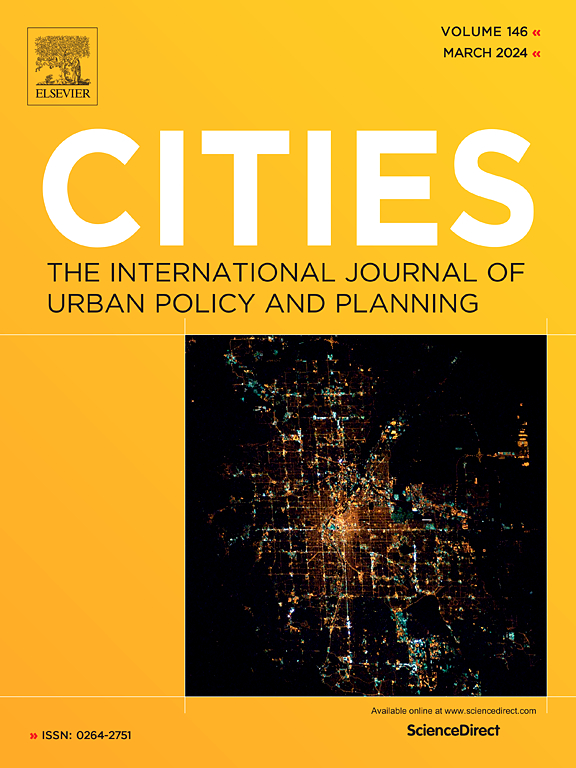评估地铁可达性的空间和种族公平性:纽约市案例研究
IF 6
1区 经济学
Q1 URBAN STUDIES
引用次数: 0
摘要
通过便捷、公平的交通来提高公共交通的实用性已成为追求社会公正目标的焦点之一。本研究旨在全面分析纽约市(NYC)基于地理和种族/族裔的地铁系统公平使用情况,揭示交通公平、种族多样性和城市动力之间的复杂关系。之所以选择纽约市作为案例研究对象,是因为纽约市人口构成多样,公共交通系统广泛,而且以前对其地铁系统的种族公平性方面的研究较少。研究采用了重力指数来调查纽约市地铁系统的可达性,即地铁站的距离和服务频率,而公平性则通过基尼系数和洛伦兹曲线来分析。在进行分析时,使用了美国社区调查(ACS)数据和通用公交反馈规格(GTFS)。研究结果表明,纽约市外围行政区的地铁系统可达性各不相同,其中面积最大的皇后区因地铁站有限而尤为突出。此外,研究还揭示了各区在地铁可达性方面存在的明显种族差异,皇后区的非西班牙裔黑人社区(占该区人口的 17%)明显缺乏便捷的地铁站。这些情况表明,迫切需要采取有针对性的干预措施和政策改革,以解决已发现的差距。政策制定者和交通规划者应优先考虑增加服务不足地区的地铁基础设施、提高服务频率、加强连通性等措施,以减少地铁可达性方面的种族和空间不平等。本文章由计算机程序翻译,如有差异,请以英文原文为准。
Assessing spatial and racial equity of subway accessibility: Case study of New York City
Enhancing the utility of public transportation through easy and equitable access has become one of the focal points in the pursuit of social justice goals. This study aims to provide a comprehensive analysis of equitable access to the subway system in New York City (NYC) based on geography and race/ethnicity, shedding light on the complex relationship between transportation equity, racial diversity, and urban dynamics. New York City is selected as the case study due to its diverse demographic makeup, extensive public transportation system, and paucity of previous research on the racial justice dimensions of its subway system. Gravity index is employed to investigate the accessibility of the NYC subway system in terms of distance from stops and the frequency of service while equity is analyzed by Gini coefficients and Lorenz curves. To conduct this analysis, American Community Survey (ACS) data and The General Transit Feed Specifications (GTFS) are used. The findings reveal that accessibility to the subway system varies across New York City's outer boroughs, with Queens, the largest borough by area, notably standing out due to its limited availability of subway stations. Moreover, the study uncovers stark racial disparities in accessibility within boroughs, with the non-Hispanic Black community in Queens (which represents 17 % of the borough's population) facing a pronounced lack of easy access to subway stations. These insights underscore the urgent need for targeted interventions and policy reforms to address the identified disparities. Policymakers and transportation planners should prioritize initiatives such as increasing subway infrastructure in underserved areas, improving the frequency of service, and enhancing connectivity to reduce racial and spatial inequities in subway accessibility.
求助全文
通过发布文献求助,成功后即可免费获取论文全文。
去求助
来源期刊

Cities
URBAN STUDIES-
CiteScore
11.20
自引率
9.00%
发文量
517
期刊介绍:
Cities offers a comprehensive range of articles on all aspects of urban policy. It provides an international and interdisciplinary platform for the exchange of ideas and information between urban planners and policy makers from national and local government, non-government organizations, academia and consultancy. The primary aims of the journal are to analyse and assess past and present urban development and management as a reflection of effective, ineffective and non-existent planning policies; and the promotion of the implementation of appropriate urban policies in both the developed and the developing world.
 求助内容:
求助内容: 应助结果提醒方式:
应助结果提醒方式:


